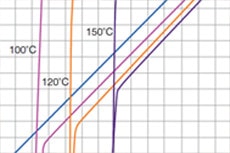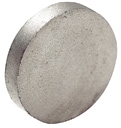SmCo Discs
View Product Detail
SmCo Blocks
View Product Detail
Samarium Cobalt (or SmCo) magnets are strong permanent magnets made of an alloy of samarium and cobalt. They are known for their high magnetic strength, exceptional temperature resistance, and reliable performance without oxidation protection. As a result, they are more suitable for certain applications than Neodymium magnets.
Machining & Magnetization
Samarium Cobalt magnets offer strong resistance to demagnetization. All Samarium Cobalt magnets cannot be formed with conventional drilling, turning or milling processes, and must be ground before they are magnetized. Additionally, large or complex assemblies are usually magnetized prior to assembly. Standard tolerances for Samarium Cobalt magnets are +/-.005 for ground dimensions.
1:5 alloy material
1:5 offers 16 MGOe (energy product) to 22 MGOe and is made up of approximately 37% samarium and 63% cobalt. The 1:5 series has a maximum recommended operating temperature of 250°C. SmCo 1:5 magnets require lower field strengths than 2:17 materials to magnetize. In some instances, 1:5 material may be magnetized with multiple poles, provided that a magnetizing fixture is available.
2:17 alloy material
2:17 offers 24 MGOe to 32 MGOe and is composed of about 25% samarium, 5% copper, 18% iron, 2% hafnium or zirconium, with the remainder being cobalt. The 2:17 series has a maximum operating temperature of 350°C. Special grades of 2:17 are available which can operate to even higher temperatures. SmCo 2:17 requires a higher magnetizing field than alloy 1:5 does, and multiple pole magnetization is sometimes possible, provided that a magnetizing fixture is available.
Demagnetization Curves

View our SmCo demagnetization curves here.







